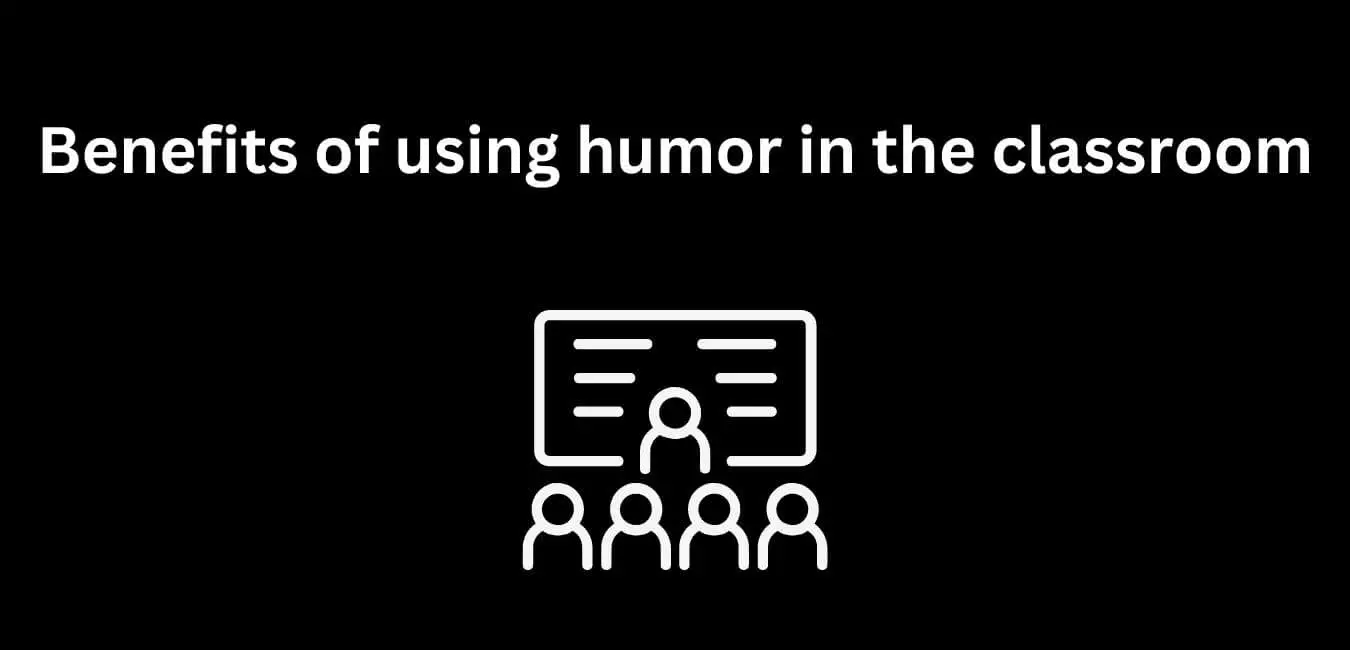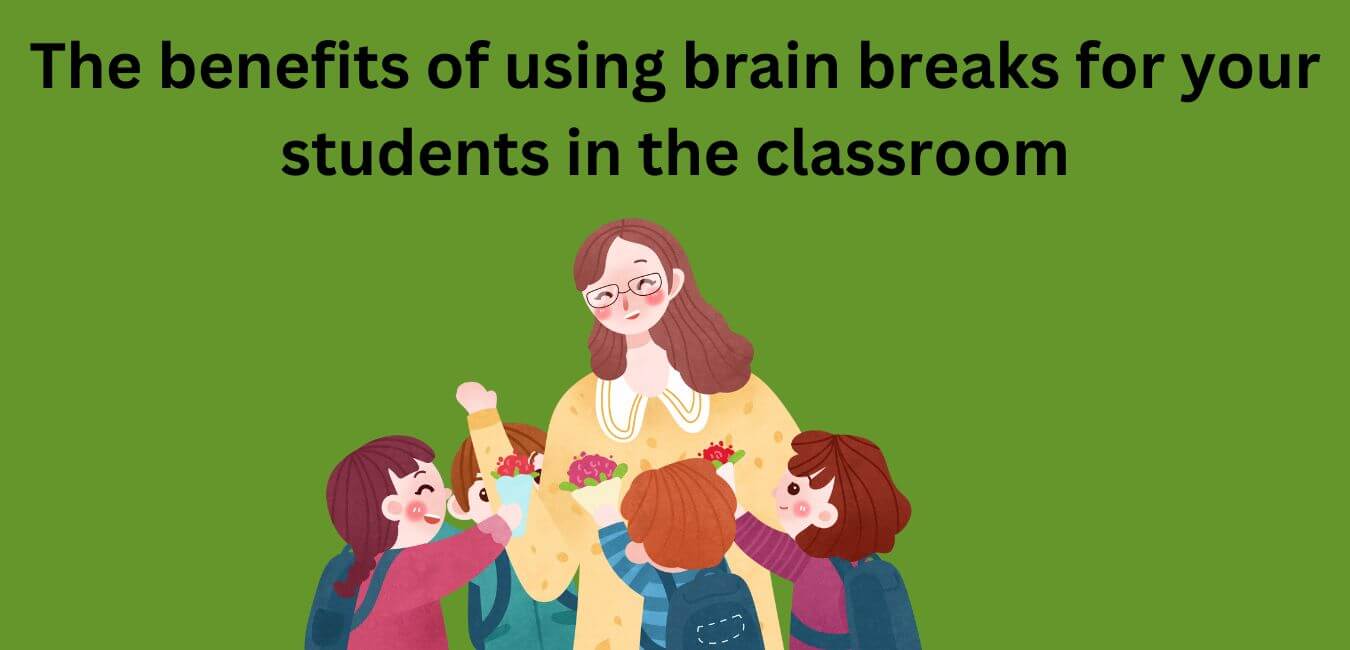
In the great dance of teaching, whether you’re leading a class full of keen minds or navigating the challenge of engaging an aloof crowd, regularly checking for understanding is key.
From my own hands-on classroom experiences and meticulous research, I’ve unearthed 39 potent strategies that can significantly boost your ability to gauge understanding in a learning environment.
This article will serve as your trusted guide through these proven methods – leveraging technology and posing open-ended inquiries are just a couple examples – gifting you with fresh tools to confidently confirm every student’s progress.
Are you ready to bring transformation into your teaching approach? Let’s jump in!
Key Takeaways
- Use technology, such as iPads and computers, to check for understanding in fun ways.
- Ask open-ended questions to encourage critical thinking and gauge student comprehension.
- Observe physical responses and use visual aids to assess understanding in real time.
- Incorporate cooperative learning structures to promote active engagement and collaboration.
- Employ question-and-answer methods, picturing techniques, exit tickets, self-written quizzes, and midpoint pop quizzes to effectively check for understanding.
Factors to Consider When Checking for Understanding in Your Classroom
Consider utilizing technology as a factor when checking for understanding in your classroom.
Use of technology
Tech tools can help check understanding in class. iPads and computers are good for this. They let students show what they know in fun ways. For example, they can make a slide show or a digital art piece to share an idea.
This keeps them engaged and lets you see their learning. Use tech often but mix it with other methods too.
Asking open-ended questions
As a teacher, one effective strategy I use to check for understanding in my classroom is asking open-ended questions. These types of questions require students to think critically and articulate their thoughts and ideas.
Instead of simply giving a yes or no answer, students are encouraged to provide explanations or examples to demonstrate their comprehension.
Open-ended questions help me gauge the depth of students’ understanding and identify any misconceptions they may have. By asking questions like “How would you explain this concept in your own words?” or “Can you give an example that relates to what we just learned?”, I can assess whether students truly grasp the material.
Moreover, open-ended questions promote active participation and engagement among students. They encourage students to think independently, express their ideas, and engage in meaningful discussions with their peers.
By incorporating open-ended questioning techniques into my lessons regularly, I create a supportive learning environment where every student’s voice is valued.
Physical responses from students
Physical responses from students are an important indicator of their understanding in the classroom. As a teacher, I pay attention to how my students react physically during instruction.
For example, if they nod their heads or engage in facial expressions, it shows that they are following along and comprehending the material. On the other hand, if they look confused or disinterested, it’s a sign that further clarification may be needed.
I also encourage physical participation through activities like thumbs-up/thumbs-down or hand-raising to gauge their understanding in real time. These physical cues help me assess student comprehension and make adjustments to my teaching strategies as necessary.
Utilizing visual aids
Visual aids are a powerful tool for checking understanding in the classroom. By using visual aids like charts, graphs, and diagrams, students can better visualize and comprehend complex concepts.
These aids help to make abstract ideas more concrete and accessible. They also provide a visual representation that supports students’ learning and retention of information. For example, when teaching about the water cycle, I use a diagram that shows the different stages in a clear and simple way.
This allows students to see how water moves through the cycle, helping them understand the concept more easily. Visual aids not only engage students but also allow me to assess their understanding by observing their interpretation of the visuals or asking specific questions related to what they see.
Assessing student self-assessment
When checking for understanding in your classroom, it’s important to assess student self-assessment. This means giving students the opportunity to reflect on their own learning and evaluate their understanding of a topic or concept.
By encouraging self-assessment, students become active participants in their own education and take ownership of their learning. One way to do this is by providing self-check questions or prompts that allow students to reflect on what they have learned and how well they understand it.
Another approach is to use self-assessment rubrics that guide students in evaluating their progress based on specific criteria. By incorporating student self-assessment into your assessment strategies, you can gain valuable insights into individual student needs and adjust your teaching accordingly.
Cooperative learning structures
Cooperative learning structures are a great way to check for understanding in your classroom. I have found that when students work together in groups, they can help each other understand the material better. Here are some cooperative learning structures you can try:
- Think-Pair-Share: Have students think about a question or prompt individually, then pair up and discuss their ideas before sharing with the whole class.
- Jigsaw: Divide students into small groups and assign each group a different part of the material to become experts on. Then, have them teach their groupmates what they learned.
- Round Robin: Have students sit in a circle and take turns sharing their thoughts or answers to a question.
- Numbered Heads Together: Assign each student in a group a number, then ask a question or provide a prompt. Students discuss within their group and then the teacher randomly calls out a number for one student to share the group’s answer.
- Gallery Walk: Display different pieces of information or questions around the room and have students move around to observe and discuss them with their classmates.
- Group Investigation: Assign each group a research topic and have them work together to gather information and present their findings to the class.
Effective Strategies to Check for Understanding
In this section, we will explore a variety of effective strategies that teachers can use to check for understanding in their classrooms.
Question and answer method
As a teacher, one effective strategy I use to check for understanding in my classroom is the question and answer method. During a lesson, I ask students questions related to the content we are covering.
These questions can be open-ended, requiring students to provide explanations or examples. By asking these questions, I can assess their comprehension and encourage critical thinking.
The question and answer method allows me to gauge if my students have grasped the concepts being taught. It also gives them an opportunity to actively participate in the learning process by sharing their thoughts and ideas.
Additionally, this strategy helps me identify areas where students may be struggling or need further clarification.
To ensure that all students are engaged and participating, I make sure to give everyone a chance to answer the questions. This can be done through random selection or by using techniques like think-pair-share where they discuss their answers with a partner before sharing with the class.
Picturing techniques
When assessing student understanding, picturing techniques can be a valuable tool. These techniques involve using visual aids to help students visualize and comprehend concepts. Here are some ways to incorporate picturing techniques in your classroom:
- Encourage students to create mind maps or concept webs to connect related ideas.
- Use graphic organizers, such as Venn diagrams or flowcharts, to help students organize their thoughts.
- Ask students to draw diagrams or illustrations that represent key concepts or processes.
- Provide visual prompts, such as pictures or videos, to stimulate discussion and comprehension.
- Utilize interactive whiteboards or projector screens to display visual content during lessons.
Exit tickets
Exit tickets are a quick and easy way to check for understanding at the end of a lesson. I often use them to gather feedback from my students and see if they have grasped the key concepts.
For example, I might ask them to write down one thing they learned or one question they still have about the topic. This gives me valuable insight into their comprehension and helps me plan future lessons accordingly.
Exit tickets also allow students to reflect on their own learning, which promotes metacognition and self-assessment skills. By using exit tickets regularly, I can ensure that my teaching is effective and make adjustments as needed based on the data collected.
Self-written quizzes
One effective strategy to check for understanding is to have students create their own quizzes. This allows them to actively engage with the material and assess their own knowledge. Here are some ways you can incorporate self-written quizzes in your classroom:
- Have students come up with multiple – choice questions based on the lesson content.
- Encourage them to include both easy and challenging questions to test their understanding.
- Provide a template or format for students to organize their quiz questions.
- Allow them to exchange quizzes with a partner or small group for peer assessment.
- Discuss the correct answers as a class, giving students an opportunity to explain their choices.
Midpoint pop quizzes
Midpoint pop quizzes are a great way to check for understanding in the middle of a lesson. They help me see if my students are grasping the content before moving on. Here’s how I use midpoint pop quizzes:
- I prepare a short quiz with questions related to the material we’ve covered so far.
- I give the quiz halfway through the lesson, allowing enough time for students to answer without feeling rushed.
- Students complete the quiz individually to assess their individual understanding.
- After collecting the quizzes, I quickly review them to identify any areas where students may be struggling.
- Based on the results, I can adjust my teaching approach or provide additional support if needed.
Two-minute summaries
During the lesson, I use two-minute summaries as a quick and effective way to check for understanding in my classroom. After teaching a concept or topic, I ask students to take two minutes to summarize what they have learned.
They can write a brief paragraph, draw a diagram, or even create a short video explaining the main ideas. This strategy helps me gauge their comprehension and identify any misconceptions that need to be addressed.
It also encourages active engagement and reflection on the material they have just learned. By incorporating two-minute summaries into my lessons, I ensure that students are grasping the content and can make immediate adjustments if needed.
Incorporating Different Assessment Tools
Incorporating a variety of assessment tools, such as keyword identification and sentence completion exercises, can help you effectively gauge student comprehension. Read on to discover more engaging strategies to check for understanding in your classroom.
Keyword identification
Understanding the keywords used in a lesson is crucial for students. By identifying and defining these keywords, students can better comprehend and remember the content. Here are some effective strategies for keyword identification:
- Provide students with a list of key vocabulary words before the lesson.
- Encourage students to highlight or underline these keywords throughout the lesson.
- Discuss the meaning of each keyword as a class, using context clues or reference materials.
- Ask students to create flashcards with the keyword on one side and the definition on the other.
- Have students use the keywords in sentences or short paragraphs to demonstrate their understanding.
- Incorporate games or activities that involve matching keywords with their definitions or examples.
- Assign homework or practice exercises that require students to correctly use the keywords in context.
Vocabulary definition
As a teacher, I find that vocabulary definition is an important aspect of checking for understanding in the classroom. It helps students grasp the meaning of new words and enhances their overall comprehension. Here are some strategies to incorporate vocabulary definition into your teaching:
- Provide clear and concise definitions: Break down complex words into simpler terms so that students can easily understand their meanings.
- Use real-life examples: Relate new words to familiar objects or situations to help students make connections and remember the definitions better.
- Encourage context clues: Teach students how to use surrounding words or phrases to determine the meaning of unfamiliar vocabulary.
- Create word banks: Develop a list of related words that can expand students’ understanding of a specific topic or concept.
- Practice through exercises: Engage students in activities like matching definitions with words, completing sentences with appropriate vocabulary, or creating their own sentences using new words.
- Incorporate visual aids: Display images or illustrations that represent the meaning of different vocabulary words to reinforce comprehension.
- Offer regular review sessions: Revisit previously learned vocabulary periodically to ensure retention and understanding.
- Utilize technology tools: Make use of online dictionaries, educational apps, or interactive games that provide instant feedback on vocabulary understanding.
Fill in the missing word exercises
Fill in the missing word exercises can be a helpful way to check for understanding in your classroom. Here are some ways you can incorporate fill in the missing word exercises into your teaching:
- Provide students with sentences or passages where certain words are left out. Ask them to fill in the missing words to complete the sentences or make sense of the passage.
- Use cloze activities, where students have to fill in the missing word based on context clues.
- Give students worksheets with sentences that have blanks and provide them with a word bank to choose from when filling in the blanks.
- Create interactive activities using digital tools that allow students to drag and drop words into their correct positions within a sentence or passage.
Sentence completion exercises
One effective strategy for checking understanding is using sentence completion exercises. This involves providing students with incomplete sentences and asking them to fill in the missing words or phrases. Sentence completion exercises can help assess students’ comprehension of key concepts, vocabulary, and grammar. It also encourages critical thinking and allows students to demonstrate their understanding in their own words. By reviewing the completed sentences, teachers can identify any misconceptions or areas that need further clarification. Additionally, sentence completion exercises provide an opportunity for students to practice expressing their thoughts and ideas in writing.
Main idea identification
One strategy for checking understanding is identifying the main idea. Here are some ways to do it:
- Summarize the main idea in your own words.
- Identify the key points or arguments of the text.
- Look for supporting details that explain or give evidence for the main idea.
- Pay attention to headings, subheadings, and topic sentences.
- Ask yourself what the author wants you to understand or take away from the text.
Ranking and sorting activities
Ranking and sorting activities are effective strategies to check for understanding in the classroom. They help assess students’ comprehension and critical thinking skills. Here are some ways to incorporate ranking and sorting activities into your teaching:
- Ask students to rank items or ideas based on certain criteria.
- Provide a list of items and have students sort them into categories.
- Use graphic organizers or charts to visually represent rankings and sorting.
- Encourage discussion among students as they justify their rankings or sorting decisions.
- Offer opportunities for students to explain their thought process behind their rankings or sorting choices.
- Use technology tools, such as interactive whiteboards or online platforms, to facilitate ranking and sorting activities.
Encouraging Student Engagement and Participation
To promote student engagement and participation, there are various strategies that can be implemented in the classroom. These include team journaling, paired journaling, pair and share activities, debates and discussions, team presentations, and act it out activities.
Team journaling
Team journaling is an effective strategy to check for understanding and encourage student engagement. It involves students working together in groups, writing down their thoughts, reflections, and questions about the lesson or topic.
This activity not only helps students organize their thinking but also promotes critical thinking and collaboration skills. By sharing their journals with each other, students can compare and discuss their ideas, leading to deeper understanding of the material.
Team journaling also allows teachers to assess individual comprehension within a group setting and provides valuable insights into student learning needs.
Paired journaling
Paired journaling is an effective strategy to check for understanding in the classroom. It involves students working together in pairs to write about their thoughts and reflections on a given topic or lesson.
This activity encourages collaboration and allows students to express their understanding in written form. By reading and discussing each other’s journals, they can compare their ideas, clarify any misunderstandings, and deepen their comprehension of the material.
Paired journaling also promotes communication skills and critical thinking as students analyze and respond to each other’s writing. Overall, this strategy fosters active engagement and provides valuable insights into students’ learning progress.
Pair and share activities
Pair and share activities are a great way to check for understanding in the classroom. Here are some effective strategies to incorporate this method:
- Have students pair up and discuss a topic or question related to the lesson.
- Encourage students to share their thoughts, ideas, and understanding with their partner.
- Provide guiding questions or prompts to spark meaningful conversations.
- Rotate partners regularly to promote collaboration and diverse perspectives.
- Monitor the discussions and listen in on student conversations to assess their comprehension.
- Offer support and clarification if needed during the pair and share activity.
- Use this opportunity to address any misconceptions or gaps in understanding that arise.
- Encourage active listening by requiring each student to summarize their partner’s ideas.
Debates and discussions
Debates and discussions are effective strategies for checking for understanding in the classroom. They allow students to engage with each other and express their thoughts on a topic.
During debates, students can argue different viewpoints, which helps them understand multiple perspectives. Discussions encourage active participation and critical thinking as students share their ideas and opinions.
By listening to their peers’ arguments or insights, students can further develop their own understanding of the subject matter. Debates and discussions not only check for comprehension but also promote collaboration, communication, and analytical skills among students in an interactive learning environment.
Team presentations
Team presentations are a great way to check for understanding in the classroom. Here are some ways you can incorporate this strategy:
- Divide students into small groups and assign them a topic or concept to present to the class.
- Each group can prepare a presentation using visual aids, such as posters or PowerPoint slides, to help explain their topic.
- Encourage students to collaborate and discuss their ideas within their group before creating their presentation.
- During the presentations, allow time for questions from both the presenting group and the rest of the class.
- As the teacher, actively listen and observe each presentation, noting any misconceptions or gaps in understanding.
- Provide constructive feedback and ask probing questions to promote deeper thinking and clarify any confusing points.
- After each presentation, facilitate a brief discussion to allow students to reflect on what they learned from their peers.
Act it out activities
Act it out activities are a fun and engaging way to check for understanding in the classroom. Here are some ideas:
- Students can create skits or role – plays to demonstrate their understanding of a concept.
- They can act out a scene from a book or historical event to show their comprehension.
- Teachers can provide props or costumes to enhance student performances.
- Students can work in pairs or small groups to collaborate on their act it out activities.
- Teachers can assess understanding by observing how well students communicate and portray key information through their performances.
FAQs
1. What are some of the effective strategies for assessing learning in my classroom?
There are many ways to assess learning, such as using formative assessment methods or creating feedback loops with students.
2. How can I check the student’s understanding in the class?
To check for comprehension, you can use various instructional techniques like testing for understanding or monitoring student progress through active learning strategies.
3. Why is verifying a student’s grasp critical?
Ensuring comprehension and gauging student knowledge allow teachers to adjust their teaching tactics according to individual student needs.
4. Can engaging students help improve their understanding?
Yes, engaging students with effective teaching strategies helps them better comprehend the lessons hence boosting their overall knowledge level.
5. What role does feedback play in checking comprehension?
Feedback and assessment are vital tools for evaluating student learning by confirming whether they grasp what has been taught or not
6. Are there specific ways to understand every different need of my students?
Measuring learning often reveals varying needs among your students, so tailoring instructional techniques makes sure each learner benefits from your teachings.
Conclusion
In conclusion, checking for understanding in the classroom is crucial for effective teaching and student learning. By utilizing the 39 strategies mentioned, such as using technology and asking open-ended questions, teachers can ensure that students comprehend the material.
Factors to consider include incorporating different assessment tools and encouraging student engagement and participation. By continuously monitoring student understanding, educators can make necessary adjustments to improve their teaching methods and support student success.
















